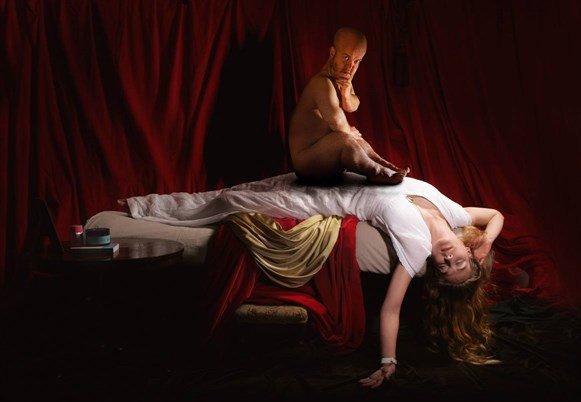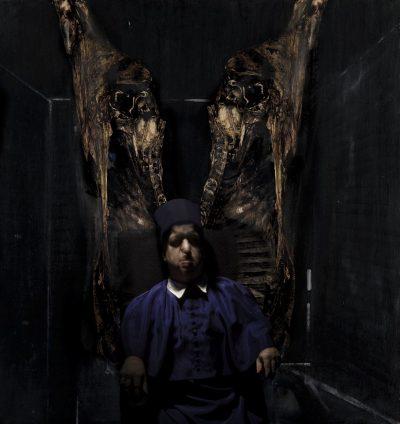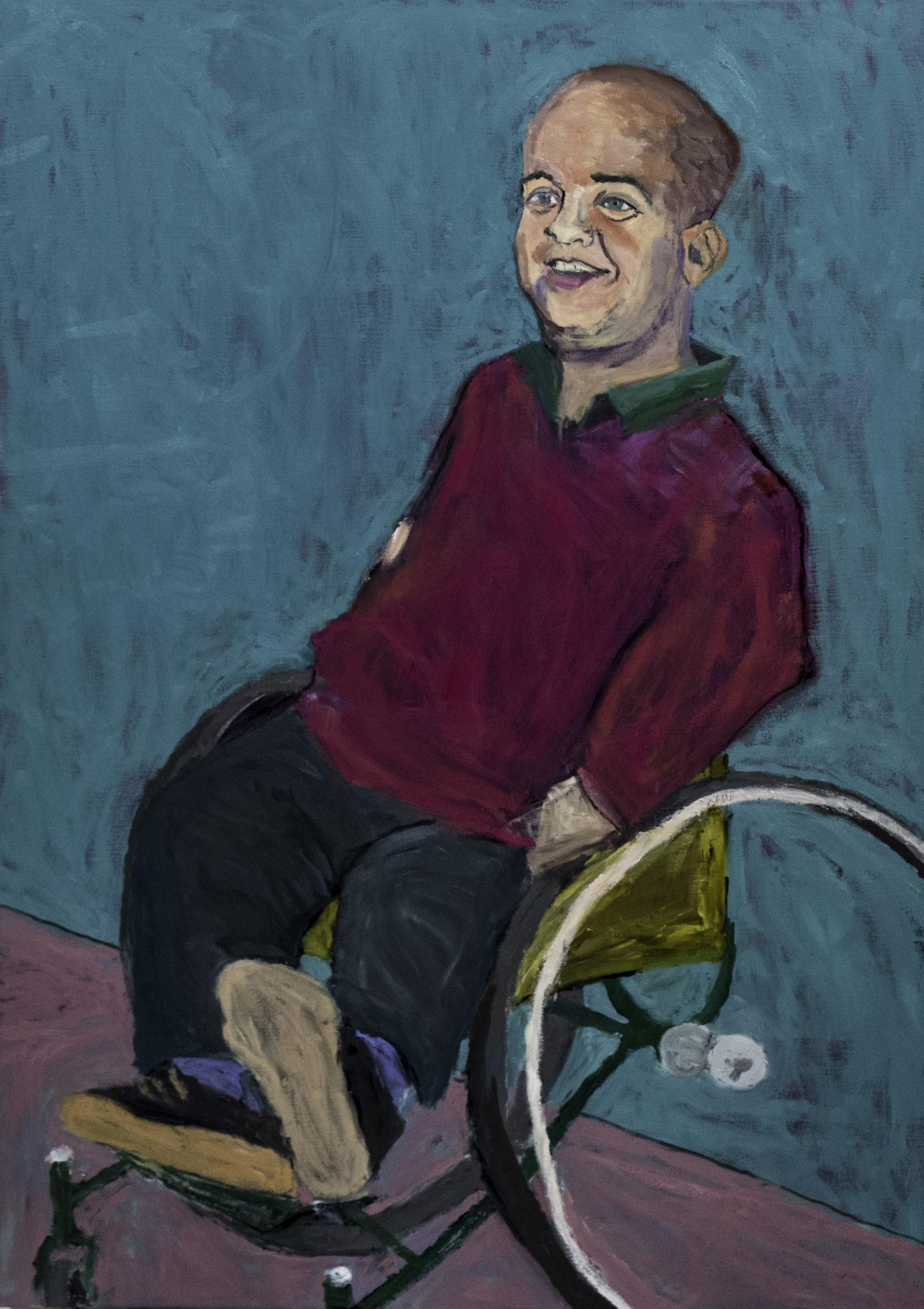Incarnate is a triptych: a conversation between Tom Shakespeare and some of the great works from the Renaissance to the modern era. It focuses on the theme of human embodiment.
Incarnate is Shakespeare’s largest art work. It was inspired by the Gothic Nightmares exhibition at Tate Britain. Here it is in (a poor copy – but you get the idea of its) triptych form:

Shakespeare is a social scientist and bioethicist, an academic who writes and talks and researches mainly about disability. He’s also a visual artist. Although he started out as part of the ‘disability arts’ movement, Shakespeare is less interested now in identity politics, “wanting instead to use images to prompt reflection and insight, particularly through engaging with the art historical tradition”.
Starting with the central painting in Incarnate, here’s The Nightmare:

This is derived from Fuseli’s Nightmare. It’s about how every expectant mother turns into a bio-ethicist: To have a test, or not? To terminate the pregnancy, or not?

The second in the series, ‘Dead Christ, is based on Shakespeare’s idea that the early attempt at perspective in Mantegna’s original creates an optical illusion in which Christ appears to have achondroplasia (Shakespeare’s form of dwarfism).
The last painting is Figure with Meat. This draws on Bacon’s similarly titled painting. Bacon draws on Velazquez portrait of Innocent X, but flanks this with sides of beef. The meat refer to Bacon’s childhood fascination with butcher shops, as well as the haunting images of raw meat made by Rembrandt and Chaim Soutine. Bacon is said to have wanted to remind viewers that the human condition is fragile—that, as he explained, “we are potential carcasses.”
In 2008, Shakespeare suffered a spinal cord injury which meant he became reliant on a wheelchair. His Figure with Meat is about “becoming disabled and the ways that the body can let you down”. He says: “The sides of beef hanging behind the chair symbolise dead flesh, a living being becoming inanimate. Because it was more personal than intellectual or aesthetic, I think this image is the most powerful of the three”

Shakespeare has a fascinating blog, including a lucky dip system. I especially like what he says about his responsibility as an artist. This is, he says: “to be truthful, to try and take people with me, to have something to say, and never hide behind words or abstruse concepts. I don’t want to make work just for other artists and curators, but for the widest possible audience.”
